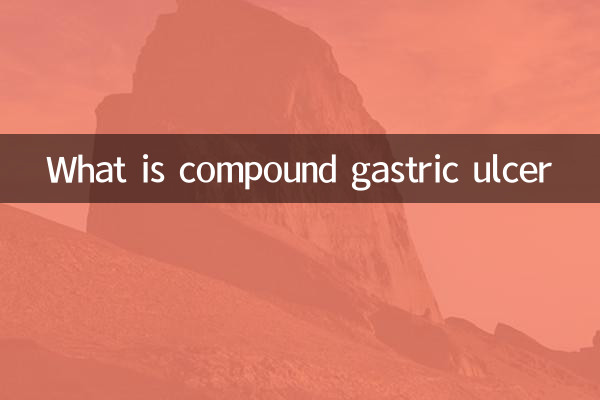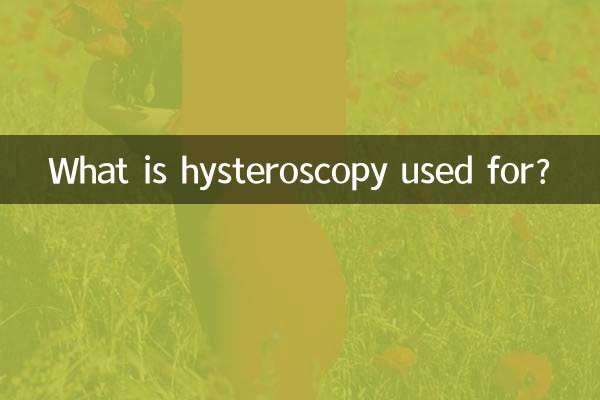What is compound gastric ulcer
Compound gastric ulcer is a common digestive system disease and a special type of gastric ulcer. It usually manifests as multiple ulcers of the gastric mucosa, which may involve different parts of the stomach simultaneously. The following will introduce compound gastric ulcer in detail in terms of definition, cause, symptoms, diagnosis and treatment.
1. Definition

Compound gastric ulcer refers to the simultaneous presence of two or more ulcer lesions in the stomach. These ulcers may be distributed in different areas of the stomach, such as the gastric antrum, gastric body, or gastric angle. Compared with single gastric ulcers, compound gastric ulcers are more difficult to treat and have a higher recurrence rate.
2. Causes
The pathogenesis of compound gastric ulcer is complex and is usually related to the following factors:
| Cause | Description |
|---|---|
| Helicobacter pylori infection | About 70%-90% of patients with gastric ulcers are infected with Helicobacter pylori, which can destroy the gastric mucosal barrier. |
| Nonsteroidal anti-inflammatory drugs (NSAIDs) | Long-term use of aspirin, ibuprofen and other drugs will inhibit the synthesis of prostaglandins and weaken the protection of the gastric mucosa. |
| abnormal gastric acid secretion | Excessive gastric acid secretion or decreased gastric mucosal defense function may lead to multiple ulcers. |
| stress factors | Stress states such as severe trauma, major surgery, and mental stress may induce compound ulcers. |
| other factors | Smoking, drinking, genetic factors, etc. may also increase the risk of disease. |
3. Symptoms
The clinical manifestations of compound gastric ulcer are similar to those of ordinary gastric ulcer, but the symptoms may be more severe:
| Symptoms | Features |
|---|---|
| Upper abdominal pain | It is usually a burning pain that occurs 1-2 hours after a meal and can be relieved by taking antacids. |
| Nausea and vomiting | It is especially common in gastric outlet obstruction. |
| black stool | Tarry stools may occur when the ulcer bleeds. |
| weight loss | Pain after eating causes patients to eat less. |
| anemia | Chronic blood loss can lead to symptoms of anemia such as fatigue and dizziness. |
4. Diagnosis
The diagnosis of compound gastric ulcer requires a combination of clinical manifestations and auxiliary examinations:
| Check items | clinical significance |
|---|---|
| Gastroscopy | The gold standard for diagnosis can visually observe the size, number, location and stage of ulcers. |
| Helicobacter pylori detection | Including breath test, rapid urease test, etc. to guide treatment plan. |
| Pathological biopsy | A necessary means to rule out malignant ulcers. |
| X-ray barium meal | Although it is not as intuitive as gastroscopy, it is still valuable for those who cannot tolerate gastroscopy. |
5. Treatment
The treatment of compound gastric ulcer should adopt comprehensive measures:
| Treatment | Specific measures |
|---|---|
| drug treatment | Proton pump inhibitor (PPI) + antibiotics to eradicate Helicobacter pylori + gastric mucosal protective agent. |
| lifestyle adjustments | Stop smoking and drinking, eat regularly, and avoid irritating foods and NSAIDs. |
| Endoscopic treatment | Endoscopic hemostatic treatment can be performed in cases of active bleeding. |
| surgical treatment | It is only applicable to those with complications (perforation, obstruction) or suspected malignant transformation. |
6. Prevention
To prevent the recurrence of compound gastric ulcer, you should pay attention to the following points:
| Precautions | Implementation recommendations |
|---|---|
| Eradication of Helicobacter pylori | Complete the course of antibiotic treatment in a standardized manner, and review after treatment to confirm eradication. |
| Use NSAIDs with caution | When necessary, PPI or gastric mucosal protective agents should be used in combination. |
| Regular review | High-risk patients should undergo regular gastroscopy follow-up to detect signs of recurrence in a timely manner. |
| maintain good habits | Maintain a regular schedule, reduce stress, and avoid overeating. |
7. Prognosis
The prognosis of compound gastric ulcer depends on many factors:
| Influencing factors | prognosis |
|---|---|
| Timely and standardized treatment | More than 90% can heal, but the recurrence rate can reach 50-70%. |
| Helicobacter pylori eradication | The recurrence rate of successfully eradicated patients can be reduced to less than 10%. |
| Complications occur | Complications such as bleeding and perforation can significantly affect the prognosis. |
| age factor | Elderly patients have a relatively poor prognosis and require closer monitoring. |
To sum up, compound gastric ulcer is a digestive system disease that requires attention. Once patients develop relevant symptoms, they should seek medical treatment promptly, receive standardized treatment, and pay attention to lifestyle adjustments to reduce the risk of recurrence and improve quality of life.

check the details

check the details